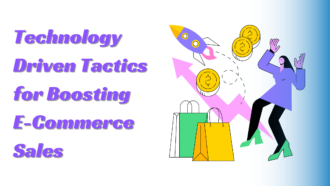Connective Ecommerce: The Complete 2024 Guide
- 1 Defining Connective E-commerce
- 2 Advantages of Connective Ecommerce
- 3 Implementing a Connective Ecommerce Strategy
- 3.1 Find Your Niche
- 3.2 Secure Suppliers
- 3.3 Select Platforms
- 3.4 Build Your Store
- 4 Marketing Your Connective Ecommerce Business
- 5 Connective Ecommerce FAQs
- 6 Closing Thoughts
- 6.1 Frequently Asked Questions
- 6.1.1 What is Connective Ecommerce?
- 6.1.2 How can Connective Ecommerce benefit my business?
- 6.1.3 What are the critical elements of implementing a Connective Ecommerce strategy?
- 6.1.4 How can I market my Connective Ecommerce business effectively?
- 6.1.5 Is Connective Ecommerce suitable for all types of businesses?
Did you know 87% of online shoppers believe seamless connectivity across all touchpoints is crucial for a satisfying shopping experience? Creating a robust connective e-commerce strategy is paramount for businesses to thrive in today’s fast-paced digital landscape. Companies can boost engagement, drive conversions, and foster long-term loyalty by integrating various channels and enhancing customer interactions. Stay tuned as we delve into the key strategies and benefits of implementing a cohesive, connective e-commerce approach to elevate your brand’s online presence and deliver an exceptional shopping journey for your customers.
Defining Connective E-commerce
Connective vs. Dropshipping
Connective e-commerce is a cost-effective online selling strategy emphasizing collaboration between manufacturers, retailers, and consumers. Cortney Fletcher, a prominent figure in the ecommerce industry, coined the term “connective ecommerce” to describe this innovative approach.
The primary distinction between connective ecommerce and dropshipping lies in their operational models. While dropshipping involves direct shipment from suppliers to customers, connective ecommerce integrates various stakeholders to streamline the selling process. This collaborative effort enhances efficiency and fosters stronger relationships within the supply chain.
Connective ecommerce offers significant cost-reduction benefits across advertising, selling, and order fulfillment. Businesses can optimize operations and minimize expenses by leveraging shared resources and expertise. This approach paves the way for enhanced profitability and sustainable growth in the competitive online marketplace.
Legitimacy and Trust
Connective ecommerce goes beyond traditional dropshipping by prioritizing legitimacy and trust. Unlike dropshipping, which may raise concerns about product quality and delivery times, connective ecommerce focuses on building credibility through transparent partnerships and reliable customer service.
By expanding on the principles of dropshipping, connective ecommerce further reduces upfront costs for businesses while maintaining high standards of product quality and customer satisfaction. This integrated approach ensures all parties benefit from improved efficiency and trustworthiness in online transactions.
Dropshipping is a fundamental component of connective ecommerce, enabling businesses to access a diverse range of products without needing extensive inventory management or shipping logistics.
Advantages of Connective Ecommerce
Limited Hiring Needs
Connective ecommerce stands out as a legitimate online business strategy due to its efficiency and cost-effectiveness. Unlike traditional ecommerce models, connective ecommerce requires minimal hiring, reducing operational expenses significantly. Businesses can thrive without extensive staff requirements by leveraging free tools and organic marketing channels. This approach not only streamlines operations but also ensures sustainable growth in the long run.
Lower Startup Costs
In connective ecommerce, the emphasis on low-labor and low-investment solutions translates into reduced hiring needs. This leads to substantial cost savings for entrepreneurs, allowing them to allocate resources more efficiently. The decreased reliance on the workforce enables businesses to focus on innovation and product development, fostering a competitive edge in the market. Overall, the lower startup costs associated with connective ecommerce pave the way for sustainable growth and profitability.
Experimentation Freedom
The affordability of connective ecommerce enables entrepreneurs to experiment freely with various business ideas. With reduced costs in inventory management and product promotion, individuals can explore diverse market niches without significant financial risks. This freedom encourages creativity and innovation, empowering startups to adapt quickly to market trends and consumer preferences. By embracing connective ecommerce, businesses can capitalize on emerging opportunities while maintaining financial stability.
Quick Market Entry
Connective ecommerce offers entrepreneurs the flexibility to enter multiple market segments swiftly. Allowing experimentation with different brands and products promotes agility and adaptability in response to changing consumer demands. The quick market entry facilitated by connective ecommerce empowers businesses to stay ahead of competitors and capitalize on emerging trends effectively. This approach fosters a dynamic environment where creativity thrives, driving sustained success in the digital marketplace.
Implementing a Connective Ecommerce Strategy
Find Your Niche
Connective ecommerce enables quick market entry by leveraging pre-built solutions and vendor collaborations. Ready-made tools and partnerships accelerate the launch of online businesses efficiently. This approach streamlines the process, allowing companies to establish their presence promptly.
Identifying a niche through thorough market research is crucial for connective ecommerce success. Choosing the right niche significantly impacts the business’s performance and growth potential. The niche selection process directly influences the overall business strategy, effectively guiding future decisions and operations.
Secure Suppliers
To secure suppliers for connective ecommerce, businesses must conduct detailed market research to pinpoint their niche. Selecting reliable suppliers is paramount for online business success, ensuring timely deliveries and quality products. Finding and partnering with suitable dropshipping suppliers is essential for seamless operations.
Select Platforms
Securing suppliers in connective ecommerce involves taking strategic steps to establish strong partnerships. Reliable suppliers play a pivotal role in driving the success of an online business, ensuring customer satisfaction through consistent product availability. Partnering with trustworthy dropshipping suppliers enhances operational efficiency.
Build Your Store
When selecting platforms for connective ecommerce, consider factors like cost, ease of set-up, and features offered by different platforms. Choosing the right ecommerce platform is critical for optimizing business operations and enhancing customer experience. Platform selection directly impacts sales performance and scalability.
Marketing Your Connective Ecommerce Business
SEO Content Writing
Creating a successful online store in connective ecommerce involves selecting themes, designing homepages, integrating payment gateways, and connecting with suppliers. Start by choosing a user-friendly theme that aligns with your brand image. Design an engaging homepage to attract visitors and showcase products effectively. Integrate secure payment gateways for seamless transactions. Connect with reliable suppliers to ensure product availability and timely delivery.
Social Media Strategies
In connective ecommerce, SEO optimization is crucial in improving online visibility and driving organic traffic to your website. Quality content is essential for attracting and engaging potential customers. Use keywords in product descriptions, blog posts, and meta tags to boost search engine rankings. Regularly update content to keep customers informed and engaged.
- Use keywords strategically
- Update content regularly
Email Marketing Tactics
Effective social media strategies for connective ecommerce involve leveraging platforms like Facebook, Instagram, and Twitter for brand promotion and customer engagement. Organic social media marketing can drive traffic and boost sales by creating authentic connections with your audience. Share engaging content, run targeted ads, and interact with followers to build brand loyalty.
Connective Ecommerce FAQs
Common Queries
Email marketing tactics for connective ecommerce involve personalized campaigns targeting specific customer segments. By tailoring content, businesses can increase engagement and conversion rates. Utilizing automation tools streamlines the process and ensures timely communication.
The role of email campaigns in customer retention is crucial for connective ecommerce success. Businesses can keep customers engaged and loyal by nurturing relationships through regular updates and exclusive offers. Email marketing also plays a significant role in converting leads into sales.
Implementing personalized email marketing strategies in connective ecommerce significantly boosts customer engagement. Tailoring content based on customer preferences and behaviors increases open rates and drives conversions. Businesses can create relevant and impactful email campaigns through segmentation and dynamic content.
Dropshipping Comparison
In connective ecommerce, entrepreneurs often inquire about the strategy’s effectiveness compared to traditional models. By leveraging digital platforms, businesses can reach a wider audience and streamline operations efficiently. The key lies in selecting reliable suppliers and optimizing logistics for seamless order fulfillment.
Entrepreneurs frequently seek answers to common challenges in connective ecommerce, such as inventory management and shipping complexities. Implementing robust inventory tracking and order processing systems is essential for smooth operations. Collaborating with reputable suppliers ensures timely deliveries and customer satisfaction.
To enhance the dropshipping model, connective ecommerce offers a more flexible approach with lower upfront costs. Entrepreneurs benefit from increased scalability and customization options to meet evolving market demands effectively. Leveraging technology for seamless integration across platforms optimizes business processes for sustainable growth.
Closing Thoughts
You’ve learned about the power of a connective ecommerce strategy – how it can enhance customer experiences, boost sales, and set your business apart. By implementing this approach, you’re not just selling products but creating meaningful connections with your audience, fostering loyalty and trust that can drive long-term success.
As you venture into connective ecommerce, remember to stay agile, adapt to changing trends, and always prioritize your customers’ needs. Embrace innovation, leverage technology, and continue refining your strategy to stay ahead in the competitive online marketplace. Your commitment to building solid relationships through connective ecommerce will undoubtedly pay off in increased engagement, customer satisfaction, and, ultimately, business growth.
Frequently Asked Questions
What is Connective Ecommerce?
Connective Ecommerce is a strategy that integrates various online platforms and touchpoints to create a seamless shopping experience for customers, enhancing engagement and driving sales.
How can Connective Ecommerce benefit my business?
Implementing a Connected E-Commerce strategy can increase customer loyalty, improve conversion rates, provide better data insights for personalized marketing, and enhance the overall customer experience.
What are the critical elements of implementing a Connective Ecommerce strategy?
Key elements include integrating multiple sales channels, utilizing data analytics for personalization, optimizing user experience across devices, ensuring secure payment gateways, and providing excellent customer support throughout the buying journey.
How can I market my Connective Ecommerce business effectively?
Effective marketing strategies for a Connective Ecommerce business involve leveraging social media platforms, email marketing campaigns, influencer partnerships, search engine optimization (SEO), content marketing through blogs or videos, and engaging customers through interactive experiences.
Is Connective Ecommerce suitable for all types of businesses?
Connective Ecommerce can benefit various types of businesses regardless of size or industry. Whether a small boutique retailer or a large enterprise, implementing a connective strategy can help you reach more customers, increase sales, and build brand loyalty.


















